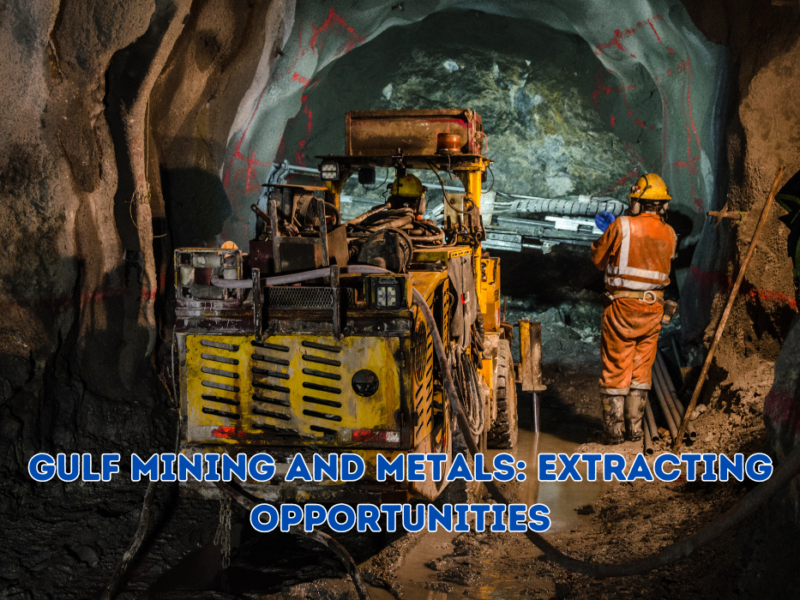The Gulf region has long been known for its vast reserves of minerals and metals, making it a key player in the global mining industry. From the early days of exploration to the current state of advanced extraction technologies, the Gulf has witnessed significant developments in its mining and metals sector.
I. Introduction
The Gulf mining and metals industry is an integral part of the region’s economy, contributing significantly to its growth and development. With rich deposits of minerals such as oil, natural gas, gold, and copper, the Gulf countries have become major players in the global market.
II. History of Gulf Mining and Metals
Early Developments
The history of mining in the Gulf can be traced back to ancient times when civilizations exploited natural resources for various purposes. From the early days of pearl diving to the discovery of oil in the 20th century, the region has a rich history of mining and metal extraction.
Key Milestones
Over the years, the Gulf region has witnessed several key milestones in its mining and metals industry, including the establishment of state-owned mining companies and the development of infrastructure to support extraction activities.
III. Current State of the Industry
The Gulf mining and metals industry is currently dominated by several major players and companies, each contributing to the region’s economic growth. Countries like Saudi Arabia, the United Arab Emirates, and Oman are leading producers of oil, natural gas, and other minerals.
Economic Impact
The mining and metals sector plays a crucial role in the Gulf economy, generating revenue, creating jobs, and attracting foreign investment. The industry’s contribution to GDP varies from country to country but is significant overall.
Challenges and Opportunities
Despite its growth and success, the Gulf mining and metals industry faces several challenges, including fluctuating commodity prices, geopolitical tensions, and environmental concerns. However, these challenges also present opportunities for innovation and growth.
IV. Emerging Trends and Technologies
Automation and Digitalization
One of the most significant trends in the Gulf mining and metals industry is the adoption of automation and digitalization technologies. These innovations improve efficiency, reduce costs, and enhance safety in extraction and processing operations.
Sustainable Practices
Another emerging trend is the focus on sustainability and environmental responsibility. Mining companies in the Gulf are increasingly adopting sustainable practices to minimize their impact on the environment and comply with regulations.
V. Investment Opportunities
The Gulf region offers ample investment opportunities in the mining and metals sector, including exploration and extraction projects, infrastructure development, and technology innovation. With supportive government policies and a favorable business environment, the region attracts investors from around the world.
VI. Environmental Concerns and Regulations
Impact of Mining on the Environment
While mining and metals extraction are essential for economic development, they can also have negative environmental impacts, such as habitat destruction, pollution, and water scarcity. It is crucial for companies to mitigate these impacts through responsible practices and adherence to regulations.
Regulatory Framework
The Gulf countries have implemented stringent regulations to ensure that mining and metals activities are conducted in a sustainable and environmentally friendly manner. Compliance with these regulations is essential for obtaining permits and operating licenses.
VII. Future Outlook
Growth Prospects
Despite the challenges it faces, the Gulf mining and metals industry has promising growth prospects, driven by increasing demand for minerals and metals in the global market. Continued investment in infrastructure and technology will further strengthen the industry’s competitiveness.
Potential Challenges
However, the industry also faces potential challenges, including geopolitical instability, fluctuating commodity prices, and environmental concerns. Addressing these challenges will require collaboration between governments, companies, and other stakeholders.
Conclusion
In conclusion, the Gulf mining and metals industry is poised for continued growth and success, thanks to its abundant natural resources, supportive business environment, and commitment to innovation and sustainability. By embracing emerging trends and technologies and addressing challenges proactively, the region can unlock new opportunities and maintain its position as a key player in the global market.
Unique FAQs
- What are some of the most valuable minerals and metals found in the Gulf region?
- The Gulf region is rich in various minerals and metals, including oil, natural gas, gold, copper, and aluminum.
- How does the Gulf mining industry contribute to the region’s economy?
- The mining industry in the Gulf contributes significantly to GDP, job creation, and foreign investment, driving economic growth and development.
- What are some of the key challenges facing the Gulf mining and metals sector?
- Challenges facing the Gulf mining and metals sector include fluctuating commodity prices, geopolitical tensions, and environmental concerns.
- How is the Gulf mining industry addressing environmental sustainability?
- Mining companies in the Gulf are adopting sustainable practices, such as reclamation and conservation efforts, to minimize their environmental impact.
- What opportunities exist for investors in the Gulf mining and metals sector?
- Investors can explore opportunities in exploration and extraction projects, infrastructure development, and technology innovation in the Gulf mining and metals sector.


Comments